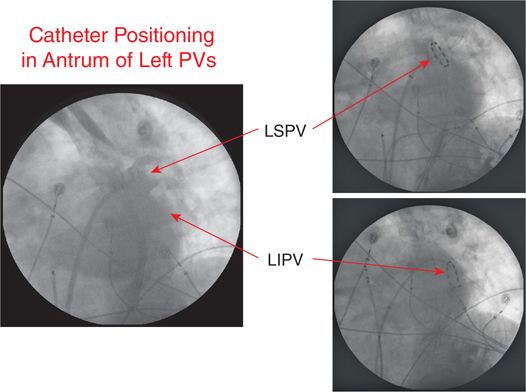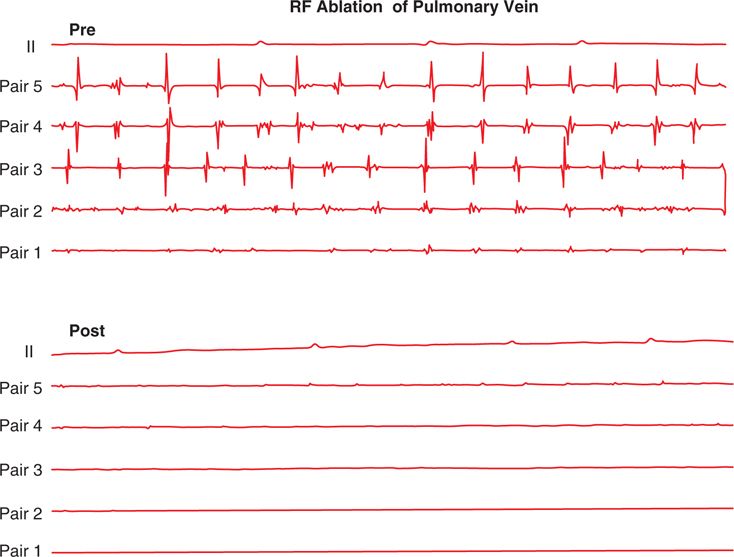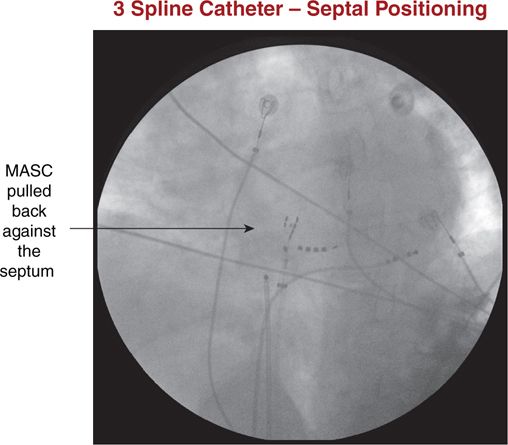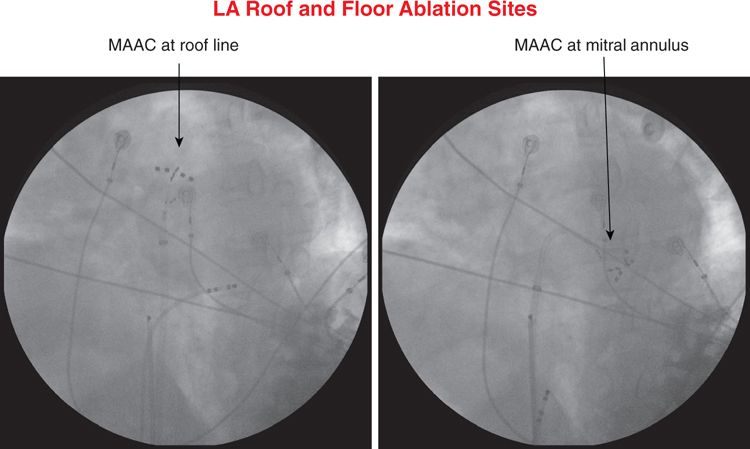FIGURE 38-1 The three primary catheters for phased radiofrequency energy delivery are (A) the MAAC used for targeting regions of complex fractionated electrograms or creating areas of ablation in the body of the left atrium such as the LA roof and mitral isthmus; (B) the PVAC placed in the pulmonary veins over a guidewire and rotated between RF applications to allow electrical isolation of the pulmonary veins; (C) the MASC delivered through the transseptal sheath, pulled back against the septum and rotated between RF applications to eliminate septal electrical activity.
FIGURE 38-2 Fluoroscopic image of the PVAC deployed in the left superior and inferior veins to allow energy delivery.
FIGURE 38-3 Elimination of PV activity in the left inferior pulmonary vein after RF delivery.
FIGURE 38-4 Position of the MASC against the septum on fluoroscopy.
FIGURE 38-5 Position of the MAAC catheter on flouroscopy along the left atrial roof line and between the left inferior pulmonary vein and the mitral isthmus.
EPIDEMIOLOGY
AF and heart failure (HF) are two of the most pervasive cardiovascular diseases, costing millions of people loss of quality of life and a decrease in survival. AF affects over 2 million Americans, and the lifetime risk of developing AF for adults aged >40 is 25%, while the AF population carries an elevated risk of developing heart failure in the range of 20%.2–4
ETIOLOGY AND PATHOPHYSIOLOGY
The causes of AF are myriad, and AF and HF represent a deadly intersection with AF promoting HF and HF promoting AF as AF is present in 5% of NYHA class I patients and up to 50% of NYHA class IV patients.5 AF can promote HF through rapid ventricular rates, poor
Stay updated, free articles. Join our Telegram channel

Full access? Get Clinical Tree






